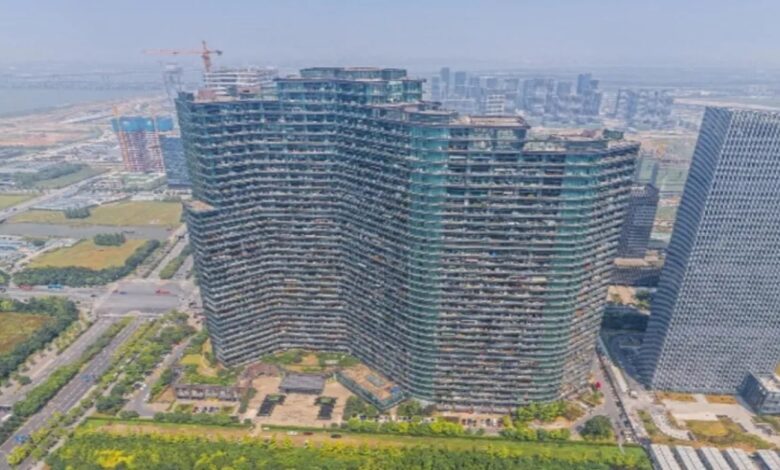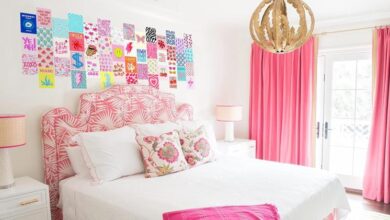Dystopian Apartment: Designing a Post-Apocalyptic Living Space

dystopian apartment In today’s world, interior design is no longer just about creating beautiful spaces, but also about expressing personality, ideologies, and even reflecting concerns about the future. One design trend that has gained significant traction over the past few years is the concept of the dystopian apartment. Dystopian design embraces the darker, grittier aspects of living, often influenced by apocalyptic themes and post-apocalyptic worlds in movies, books, and video games. In this article, we will explore what makes a dystopian apartment, how to design one, and how this trend is influencing modern interior aesthetics.
What is a Dystopian Apartment?
A dystopian apartment is a space designed to embody the chaotic, futuristic, and often grim realities found in dystopian fiction. The term dystopia refers to a society characterized by oppressive or controlled conditions, frequently highlighted in post-apocalyptic settings. Dystopian apartment designs incorporate elements that suggest survival, minimalism, and a sense of world-weary resilience. Unlike traditional designs that focus on comfort and luxury, dystopian apartments are stark, industrial, and functional, often reflecting themes of decay, desolation, and the unknown future.
Key characteristics of a dystopian apartment include raw materials, such as exposed brick, concrete floors, metal accents, and distressed furniture. This style also embraces a sense of irony, where cutting-edge technology or futuristic gadgets coexist with worn-out or salvaged furniture. In these spaces, the modern meets the forgotten, creating a contrast between a hopeful future and a shattered present. These design elements are not simply for aesthetics; they evoke feelings of survival and adaptability, often associated with dystopian tales of humanity overcoming dystopia’s harsh conditions.
The aesthetic is not confined to any particular era. While the materials used are often industrial, the layout and decor might recall both modern and ancient civilizations, merging the future and the past into one cohesive yet disjointed space. Dystopian apartments, much like their cinematic counterparts, are spaces where every object has a purpose, and style often gives way to practicality, survival, and endurance.
Dystopian Apartment Design Features
Industrial and Raw Materials
A hallmark of dystopian apartment design is the use of raw, industrial materials that convey a sense of urban decay. Think exposed pipes, concrete floors, rusted metal beams, and raw wood accents. These materials create a stark, gritty feel that mirrors the dystopian worlds seen in popular media. The focus here is on unfinished surfaces, showing the process of construction or destruction rather than a polished, seamless design.
Exposed brick walls are common in dystopian designs, often treated with a rough finish or left in their natural, worn state. Concrete floors are often left bare or lightly stained to add to the industrial look, while rusted metal features (such as pipes, beams, or even furniture) evoke the sense that the world around you is falling apart yet still functional. The rawness of these materials isn’t just aesthetic; it’s a metaphor for survival, where beauty arises from imperfection.
Moreover, the use of metal, glass, and concrete can be contrasted with softer materials like reclaimed wood or fabrics to introduce a balance that still feels tough yet comfortable. This fusion of materials reflects the harsh realities of a post-apocalyptic world, where functionality and survival take precedence over decoration and luxury. By blending industrial rawness with repurposed materials, these apartments have an organic, lived-in feel, providing a living space that is as much about utility as it is about expression.
Futuristic Meets Worn-Out
One of the most striking features of a dystopian apartment is how futuristic elements coexist with worn-out, decayed items. In these spaces, technology is often juxtaposed with salvaged or recycled furniture and fixtures. This collision of the new and the old mirrors the duality of dystopian narratives, where advanced technology or post-apocalyptic survival tools coexist with the remnants of the old world.
For instance, a futuristic, sleek smart fridge may be placed alongside an old, weathered wooden table with mismatched chairs, creating an eclectic mix of past and future. While high-tech gadgets are incorporated into the design, their presence does not overshadow the overall atmosphere of decay and survival. Instead, technology becomes a tool of convenience in an otherwise harsh environment. This blending of technology with old-world furniture and architecture creates an unsettling yet captivating contrast, reflecting a world on the brink of collapse but still holding on to what remains of its past.
The key to striking this balance is to carefully curate both high-tech and vintage items to complement each other. While one may represent an idealized future, the other serves as a reminder of what was lost. This combination ensures that the space feels both dystopian and real, allowing for a narrative of adaptation and survival to unfold through the apartment’s decor.
Color Palette
Color is a powerful tool in designing a dystopian apartment. The color palette in these spaces often draws from dark, muted tones like grays, blacks, browns, and deep greens, creating an atmosphere of somberness and mystery. These colors reflect the gloomy and uncertain mood often present in dystopian narratives, where a sense of decay and the unknown prevails.
To avoid making the space feel too dark or oppressive, accents of neon colors or metallic finishes are often used to introduce contrast and highlight certain design elements. Neon lights or metallic fixtures, reminiscent of futuristic technology, provide a stark contrast to the otherwise dark environment, offering a glimpse of hope or the potential for a bright future amidst the chaos. This juxtaposition of dark tones with flashes of vibrant color helps to balance the atmosphere and prevent it from becoming too bleak.
While the darker shades dominate the room, splashes of bold color can be used strategically to direct attention to specific features, such as lighting, art pieces, or decorative objects. These pops of color introduce a level of excitement and energy, reinforcing the theme of survival in a world that’s not entirely devoid of beauty or possibility.
Furniture and Decoration
Dystopian apartment furniture leans heavily toward minimalist and functional design, focusing on pieces that are practical, adaptable, and able to withstand the test of time. Salvaged, repurposed, or industrial-style furniture takes center stage. This might include metal-framed chairs, upcycled wood tables, or mismatched vintage furnishings that tell a story of survival and reuse.
Decor in a dystopian apartment often includes elements that tell a story or reflect the theme of a post-apocalyptic world. Graffiti, street art, and distressed paintings may decorate the walls, adding layers of personality to the space. Large, unpolished mirrors, distressed wooden shelves, and old-world relics like vintage books or clocks add character while reinforcing the theme of a forgotten world.
Additionally, lighting plays a crucial role in a dystopian apartment’s aesthetic. The goal is to create a moody atmosphere using low, ambient light sources, such as exposed bulb light fixtures, industrial lamps, and strategic neon accents. Artificial lighting provides the necessary contrast to the otherwise dimly lit space, often casting dramatic shadows that enhance the feeling of isolation and survival. The design should feel lived-in, evoking a sense of adaptability where every piece serves a purpose.
How to Create Your Own Dystopian Apartment
Step-by-Step Design Process
Creating a dystopian apartment requires careful planning and an understanding of the themes of survival and decay. The first step is to assess the space and decide on the layout. Dystopian apartment often feature open, flexible floor plans that allow for movement and adaptability, mimicking the practicality of survival in a chaotic world.
Once you have the layout in mind, it’s time to choose your materials. Exposed brick or concrete walls, industrial metals, and raw wood are the foundation of this design. Look for furniture that reflects the aesthetic—rusted metal tables, salvaged wooden chairs, and other vintage or repurposed items that tell a story. Additionally, incorporate modern, high-tech gadgets to add layers of contrast to the space.
The color palette should be dark and muted, with accents of neon or metallic finishes to create interest. When adding decor, be sure to use pieces that tell a story or add to the dystopian narrative, such as vintage maps, survivalist tools, or abstract art that evokes feelings of isolation or conflict.
Lighting and Atmosphere
Lighting is one of the most important aspects of designing a dystopian apartment. Dim lighting, coupled with industrial fixtures, creates an atmosphere of gloom and tension. Consider using exposed bulb fixtures, soft LED strips, and vintage-style lamps to create mood lighting that highlights the industrial aesthetic.
Additionally, incorporating ambient sound or white noise—such as industrial sounds, drips of water, or futuristic noise—can help set the tone and immerse you in the post-apocalyptic world you’ve created. These details make the space feel real and alive, adding another layer to the dystopian experience.
Personalizing Your Dystopian Apartment
While the dystopian aesthetic is rooted in industrial minimalism, personal touches are essential to making the space feel truly unique. Integrating vintage finds, salvaged objects, and pieces of art or memorabilia can infuse the apartment with personality and a sense of history. Whether it’s an old guitar, a collection of books, or a hand-painted mural, personalizing your dystopian apartment ensures that it feels like a lived-in, functional space rather than a cold, impersonal display.
You can also experiment with contrasting elements, such as combining sleek, futuristic technology with worn-out, second-hand furniture. The contrast between these two worlds—high-tech and decayed—will give your space an authentic dystopian feel while also making it functional and comfortable.
Dystopian Apartments in Popular Culture
Influence of Films and TV Shows
The concept of dystopian spaces has been greatly influenced by films like Blade Runner, The Matrix, and Children of Men. These movies often feature apartments or living spaces that evoke a sense of desolation, industrial decay, and survival in a harsh world. For example, the apartments in Blade Runner are cramped, dimly lit, and furnished with industrial materials, creating a feeling of both alienation and endurance.
TV shows like Black Mirror and The Expanse also explore dystopian settings, showcasing futuristic living spaces that combine high-tech gadgets with a gritty, lived-in atmosphere. These media portray the idea of futuristic urban environments that have been stripped of luxury and comfort, replaced by utilitarian designs meant for survival.
Video Games and Literature
Video games, particularly titles like Fallout and The Last of Us, have also played a significant role in popularizing dystopian aesthetics. In these games, the player navigates through post-apocalyptic worlds where the design of homes and living spaces reflects the collapse of civilization. These games provide players with the opportunity to design or explore dystopian spaces, influencing real-world design trends.
Literature has also contributed to the popularity of dystopian apartment designs, with novels such as 1984, Brave New World, and The Handmaid’s Tale painting vivid pictures of oppressive, decayed societies. The stark, utilitarian environments in these books inspire designers to create spaces that evoke similar feelings of control, survival, and the stark realities of dystopian worlds.
Conclusion: dystopian apartment
A dystopian apartment is more than just a design style; it’s a reflection of societal concerns about the future, survival, and what happens when the world as we know it collapses. By embracing industrial materials, combining futuristic elements with the old and worn, and playing with dark color palettes, you can create a space that feels both lived-in and futuristic. Whether drawing inspiration from movies, video games, or literature, designing your own dystopian apartment allows you to tap into a world of creativity, reflection, and resilience.




